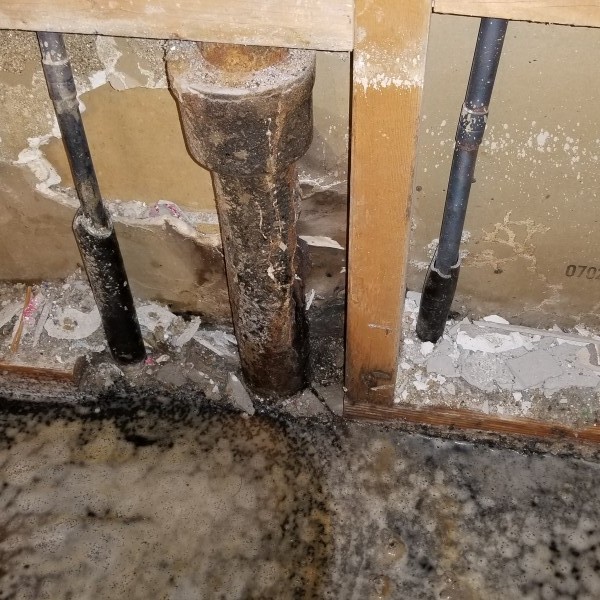How to Stop Water Damage in Your Bathroom
How to Stop Water Damage in Your Bathroom
Blog Article
This post in the next paragraphs involving How to Prevent Bathroom Water Damage is amazingly captivating. Check it out yourself and figure out what you think of it.

The washroom is extremely prone for wet accumulation as well as prospective water damage as a result of the frequent use of water in it. This post uses simple evaluation strategies to assist detecting water damage threats.
The frequent use of water in the washroom makes it extremely susceptible for damp buildup and also potential water damage. By examining it frequently, you can decrease water associated problems.
The adhering to set of inspections is simple to do and also need to be done when in every 3 months in order to maintain your washroom in good shape and to prevent potential water damages triggered by the tub, the shower, pipeline joints as well as plumbing, sinks, closets, and also the commode
Do not forget carrying out these assessments and also be complete while executing them. Remember that these straightforward examinations can conserve you a great deal of money by offering early indicators for water damage
Bathtub and Shower
The shower and bathtub need unique attention and upkeep. Examine the floor tiles and also change if split. Make certain that there is no missing out on grout in between the floor tiles. Evaluate and also change fractured caulking at joints where the wall surfaces fulfill the flooring or the bathtub. Clogged drains pipes and also pipelines troubles will certainly stop the bath tub from drying out and also might suggest severe issues underneath the tub. Speak with an expert right away to avoid structural damage. Pay attention to stainings or soft locations around the tub walls as they may show an inner leakage.
Plumbing
Signs for water damage are tough to find considering that a lot of pipelines are mounted inside the wall surfaces.
Pay special attention to floor covering and also walls moisture and discolorations as they might suggest an undetectable plumbing problem. Check dampness degrees in adjoining areas too.
Sinks as well as Cabinets
Sinks and closets are subjected to wetness and moisture everyday and are often forgotten. Examine routinely under the sink and also on the counter top above it. Fix any type of drip in the trap as it might suggest drainpipe problems. Browse the sink, slow draining pipelines may suggest a blocked drainpipe. Change sink seals if they are broken or loosened.
The Bathroom
The commode is a susceptible water joint. Check the water lines and also search for leakages around the commode seat, in the hose pipe, and also under the water tank. If you find any indications of dampness on the floor around the commode, check for leaks in the toilet edge and storage tank seals.
Be aware that hanging bathroom dish deodorants enhances the opportunities for clogs.
TIPS TO PREVENT WATER DAMAGE IN THE BATHROOM
The average household uses approximately 80-100 gallons of water per person per day. For a family of 4, that's almost 2,500 gallons of water a week! The largest portion of this consumption comes from bathroom use. Flushing the toilet uses the most water, followed by taking a shower or bath. With that much water running through the home, water damage in the bathroom is bound to happen. Knowing how to spot signs of a water leak is essential to preventing long-term damage. This guide provides you with tips to reduce the impact of water damage on your bathroom.
CAUSES OF BATHROOM WATER DAMAGE
Pipe breaks are the most common cause of water damage we see in our daily jobs. The age of a pipe plays a large role in a pipe break as well as corrosion. Over time, the metal begins to break down, allowing water to escape. Frozen pipe breaks are also a concern in the winter months. Toilet overflows caused by paper products or children flushing inappropriate items. Degraded caulking around the toilet or bathtub can allow water seepage, sometimes behind the fixture, into the subfloor or walls. Condensation forms when the water in a pipe is cooler than the air temperature. Beads of water form on the exterior of the pipes, sometimes so much so that the water begins to drip and pool below. Sink or shower backups created by poor drainage. HOW TO PREVENT WATER DAMAGE IN YOUR BATHROOM
Inspect your toilet supply line for worn or frayed hoses and replace them as needed. Winterize your plumbing to prevent a frozen pipe break. Use vent fans to prevent condensation that can lead to mold growth. Routinely check and replace degraded caulking around your toilet or bathtub. Increase the temperature in your toilet tank and insulate your pipes during the warm summer months to keep condensation from forming. Use child safety locks on the toilets. Flush only toilet paper. "Flushable" wet wipes are actually not good for your plumbing system. Additionally, feminine hygiene products should not be flushed. Prevent water from escaping the tub or shower. Make sure shower curtains are in good condition. Inspect shower doors and replace the seal strip if necessary. Wipe up any water that accumulates on the floor and use bath mats. Water left to sit can cause damage to the tiles and flooring. Refrain from using bath products containing heavy oils to avoid a clogged drain.

We hope you enjoyed reading our part on Looking for Signs of Water Damage in the Bathroom. Thanks a lot for taking the time to read through our piece. In case you liked our blog posting kindly remember to pass it around. We take joy in reading our article about Looking for Signs of Water Damage in the Bathroom.
Automated Marketing Report this page